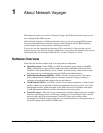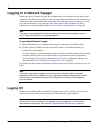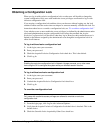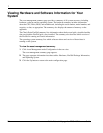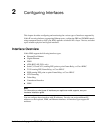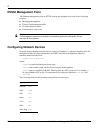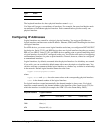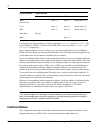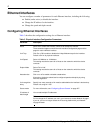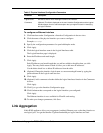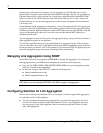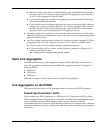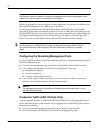
Nokia Network Voyager for IPSO 4.0 Reference Guide 31
The loopback interface also has a physical interface named
loop0
.
Use Network Voyager to set attributes of interfaces. For example, line speed and duplex mode
are attributes of an Ethernet physical interface. Each communications port has exactly one
physical interface.
Configuring IP Addresses
Logical interfaces are created for a device's physical interface. You assign an IP address to
logical interfaces and then route to the IP address. Ethernet, FDDI, and Token Ring devices have
one logical interface.
For ATM devices, you create a new logical interface each time you configure an RFC1483 PVC
for the device. Serial, T1/E1, and HSSI devices have one logical interface when they are running
PPP or Cisco HDLC. Serial, T1/E1, and HSSI devices running point-to-point Frame Relay have
a logical interface for each PVC configured on the port. You also have the option of configuring
an unnumbered interface for point-to-point interfaces. Tunnels, however, cannot be configured
as unnumbered interfaces.
Logical interfaces, by default, are named after the physical interface for which they are created.
If you wish, you can override this default name with a more descriptive or familiar name. You
can also associate a comment with the logical interface as a further way to define its relationship
in the network. Default logical interface names have the form:
<type>-s<slot>p<port>c<chan>
where
<type>
,
<slot>
and
<port>
have the same values as the corresponding physical interface.
<chan>
is the channel number of the logical interface.
For logical interfaces created automatically, the channel number is always zero. For logical
interfaces created manually, the channel number is the identifier of the virtual circuit (VC) for
which the interface is created (for example, the ATM VCI or the Frame Relay DLCI).
ISDN
isdn
Type Prefix
Physical Interface Logical Interface
Default Cisco HDLC PPP Frame Relay
Ethernet One (
c0
)
FDDI One (
c0
)
ATM One per VCI (
c#
)



